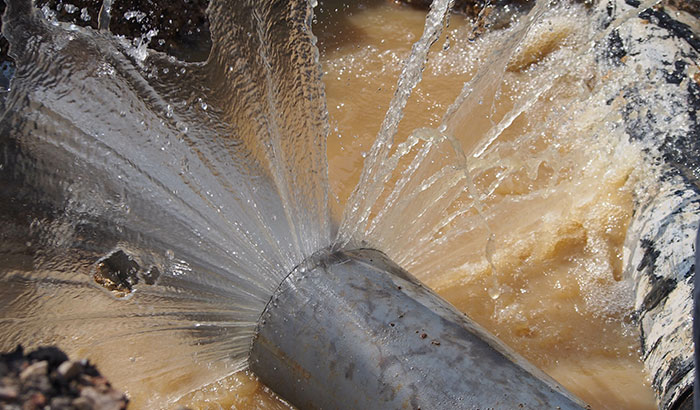Avoiding Burst Water Lines: Important Tips to Protect Your Pipes
Preventing ruptured pipelines is a critical problem for house owners, specifically throughout colder months when the risk of cold is increased. Executing strategic measures such as appropriate insulation, routine examinations, and preserving consistent indoor temperature levels can dramatically reduce the chance of pipe failure.
Understand Pipeline Vulnerabilities
Comprehending pipe susceptabilities is necessary for efficient pipes maintenance and stopping costly damages. A number of factors add to the vulnerability of pipelines to bursts, consisting of product structure, age, and ecological conditions. Older pipelines, specifically those made from galvanized steel or polybutylene, commonly degrade in time, leading to boosted danger of leakages and tears.
Temperature fluctuations can additionally dramatically influence pipeline honesty. In chillier environments, water entraped in pipes can ice up, expanding and putting in stress on the pipe walls, which might ultimately lead to a burst. Furthermore, high water pressure can stress pipes, particularly at bends and joints, heightening the probability of failing.

Insulate Pipes Appropriately
Correct insulation of pipelines is vital for protecting against cold and succeeding ruptureds throughout chilly weather condition (burst pipe). Protecting your plumbing system efficiently safeguards versus temperature level drops that can result in expensive damage. Begin by recognizing prone locations where pipes are exposed to outside temperatures, such as basements, attics, and outside wall surfaces
Usage foam pipeline insulation sleeves or cover insulation tape around these areas to provide a protective obstacle. Make sure that all sections of the pipes, particularly those with restricted warm direct exposure, receive appropriate insulation. Pay special interest to installations and joints, as these are much more susceptible to freezing.
When insulating, it's vital to choose products that satisfy neighborhood building regulations and are ideal for the specific setting. Fiberglass insulation is usually advised for its thermal resistance buildings. In addition, take into consideration utilizing warm wires or tape in severe conditions, which can be plugged in to supply extra heat
Routinely check insulated pipelines for any indications of wear or damages, as compromised insulation can reduce its effectiveness. By taking these positive measures, you considerably lower the danger of pipe ruptureds, making certain a trustworthy pipes system throughout the winter season.
Maintain Regular Temperature
A steady interior temperature level is important for avoiding ruptured pipelines throughout the freezing months. When temperature levels decrease, water within pipes can ice up, producing and broadening pressure that might eventually cause the pipelines to ruptured.Making use of a programmable thermostat can assist take care of indoor temperatures efficiently, making sure that spaces with plumbing remain cozy even when the house is empty.
This small circulation of water can prevent freezing by easing stress within the pipes. By carrying out these approaches, homeowners can substantially lower the risk of pipe bursts and secure their pipes systems against the severe winter months aspects.
Consistently Inspect Plumbing
Regular assessments of pipes systems are crucial for avoiding ruptured pipes and keeping total home integrity. Regular checks allow homeowners to recognize possible problems before they intensify right into expensive repairs or major water damage. Throughout these assessments, it is vital to take a look at noticeable pipelines for signs of deterioration, leakages, or use. Pay special attention to areas vulnerable to cold, such as basements, attics, and exterior wall surfaces.
Furthermore, checking joints and links is vital, as these factors are frequently prone to leakages. Property owners need to also evaluate water stress levels, as too much stress can stress the plumbing system and increase the danger of pipeline ruptureds.
Think about scheduling expert plumbing assessments at least as soon as a year, especially prior to wintertime, to ensure your system is prepared for chillier temperature levels. By being proactive in your strategy, you can secure your home against the pricey and disruptive repercussions of ruptured pipes.
Know Emergency Procedures
Recognizing emergency situation procedures is important for every property owner, particularly after performing normal pipes assessments. Being gotten ready for a pipes emergency situation can dramatically reduce damage and save expenses. Locate your primary water shut-off valve; it is commonly located near the water meter or where the major line enters your home. Familiarize on your own with its procedure, as turning off the water rapidly can prevent considerable flooding.
Following, keep essential devices useful. A pipes emergency package need to consist of a wrench, bettor, and towels, along with a flashlight and a bucket for small leaks. Furthermore, consider having the contact info for a trusted plumbing readily offered, should the scenario escalate past your control.
If you discover a leak or burst pipeline, immediately shut off the water supply and inform your plumber. Record the damage with photographs for insurance functions. Understand the indications of possible pipes issues, such as unusual water pressure fluctuations or damp spots on walls
Ultimately, proactive understanding and quick action are crucial in taking care of plumbing emergencies, guaranteeing your home remains secured and minimizing potential damage.

Final Thought
To conclude, stopping burst pipes requires a diverse approach that includes understanding pipe vulnerabilities, appropriate insulation, maintaining regular indoor temperature levels, regular evaluations, and understanding of emergency procedures. By applying these necessary approaches, the risk of pipes failings can be substantially decreased, see it here consequently making sure the long life and effectiveness of the pipes system. Proactive steps not only protect against prospective damage yet likewise contribute to general water conservation and the defense of residential property.
In cooler environments, water caught in pipelines can freeze, broadening and applying stress on the pipe walls, which may inevitably lead to a burst. When temperature levels decrease, water within pipes can freeze, producing and broadening stress that may ultimately create go to website the pipes to burst. By implementing these approaches, homeowners can dramatically minimize the threat of pipeline bursts and protect their plumbing systems against the rough winter months components.

Comments on “Burst Pipe Insurance Claims: What You Need to Know for Water Damage Coverage”